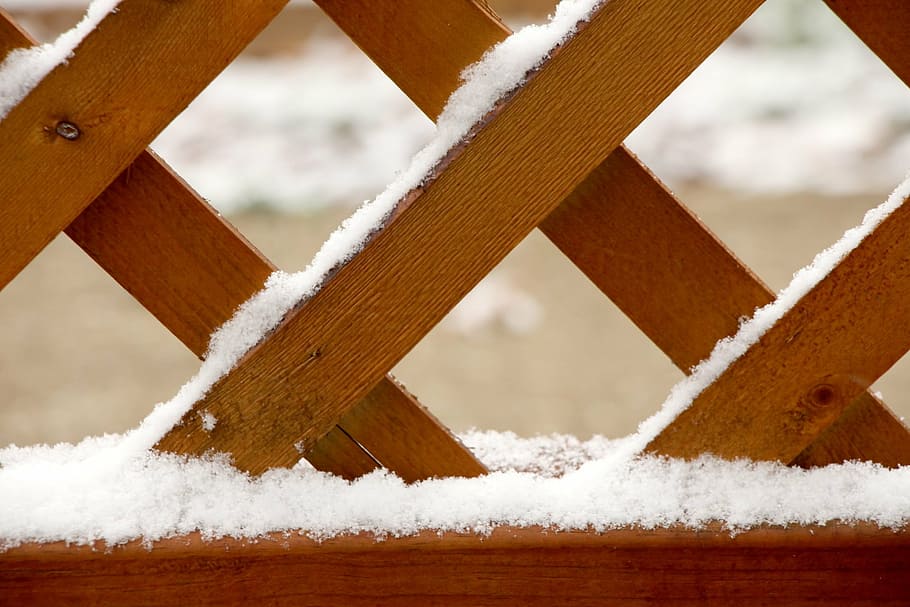
Things You Should Know About Lattice Fence
If you’ve ever walked around a big box hardware store, chances are you’ve seen lattice panels in the outdoor or garden section. You might be wondering if a lattice fence is right for your property.
You might even be wondering if you could build your own lattice fence this summer. Let’s take a closer look at what lattice fence is, where it can be used, the pros and cons, and more.
What Is Lattice Fence?
Lattice fence or lattice panels are ready-made panels that have diamond-shaped openings of various sizes. They usually come in sheets or panels that are about 4’ x 8’, or about 1200mm x 2400mm, and they have a variety of applications around the home and backyard.
When lattice is used in fencing, it can be considered a semi-privacy fence because it has some openings that can be looked through.
What Are Lattice Panels Made From?
Lattice panels can be made from a variety of materials, but the most common are usually wood and vinyl or PVC. This material is usually thinner than you would see in a wood or vinyl fence, which makes these panels lighter and usually cheaper than wood fence or vinyl fence panels.
Can Lattice Be Used for Fencing?
On its own, lattice is not suitable for fencing. Because it’s made from thinner materials, it tends to be a lot more flexible than you’d expect a fence panel to be, which is not ideal for keeping kids and pets in, or animals and unwanted visitors out.
However, it is fairly easy to create rigid frames for lattice panels, and then those frames can be mounted on steel or wood posts. So, while lattice is not ready to be fencing when you buy it off the shelf, it is a viable DIY fence-building option.
The Pros and Cons of Lattice Fencing
As with every fence type out there, lattice fence systems have pros and cons. Let’s start with the pros:
- Relatively cheap and cost-effective to buy and install – however, this could change depending on the fence structure you choose
- An easier option, particularly if you want to do a DIY fence
- Visually appealing
- Offers a semi-private fence solution
On the other hand, there are some drawbacks to lattice fencing:
- Usually not very thick material, so not as strong as other types of fence
- Not solid, so not a full privacy fence option
- If you choose wood lattice over vinyl or PVC lattice, you will need to factor maintenance and staining into your annual backyard budget
How to Install Lattice Fence
Since lattice panels are not fencing panels on their own, you will need to do a little more construction to build a fence out of lattice panels.
- Like every fence, it all starts by measuring and drawing your fence layout. This will allow you to calculate how much fence material you will need.
- Decide how your lattice panels will be installed – bearing in mind that most are only 4’ wide, so if you want a fence that’s higher than that, you might need to use the panels vertically instead of horizontally or add wider top and bottom rails to your fence.
- Choose a type of fence post. You could go with treated wood posts or something like a square steel post. Bear in mind that the post you choose will determine what kind of fittings you will need to attach your lattice fence panels to your posts.
- Decide what kind of frame your panel will have. Because lattice panels are flexible, it’s often best to build a frame around all four sides and then attach your panels to that. This will make your fence a lot more rigid, which also means more durable.
- Do your material takeoff based on the design you’ve chosen. Divide each fence line to calculate the number of posts and panels, and then calculate the vertical and horizontal components of your panels. Don’t forget to include the hardware and fittings you will need, and allow a little extra material for waste – just in case you need it.
- Install your fence posts, and leave them to set if installed in concrete. Use a piece of wood cut to the space you need between your posts as a template to ensure that your posts are set at the correct distance.
- Install your lattice fence panels.
How To Add Lattice Rail to the Top of a Fence
You might have seen wood and vinyl fences with lattice panels above the main body of the fence and wondered if you could add this to your own fence.
The answer is that you probably technically can, but it’s probably harder than you think!
This type of fence modification may require you to extend or even replace your fence posts, and it might be a lot more work than you think!
If you like the look of lattice on top of a full privacy fence panel, it’s better to find a fence company that can do that type of fence for you and builds it from scratch with that feature.
Garden Friendly, Low-Security Fence
Lattice fences are not security fences. They’re not designed to be tough or to stand up to a lot of punishment. But they can be an attractive and interesting fence option for backyards.
As with any fence, you should always do your homework about lattice fence options, design your fence carefully, and make sure that the fence you choose not only fits your budget but your lifestyle and security needs too.


